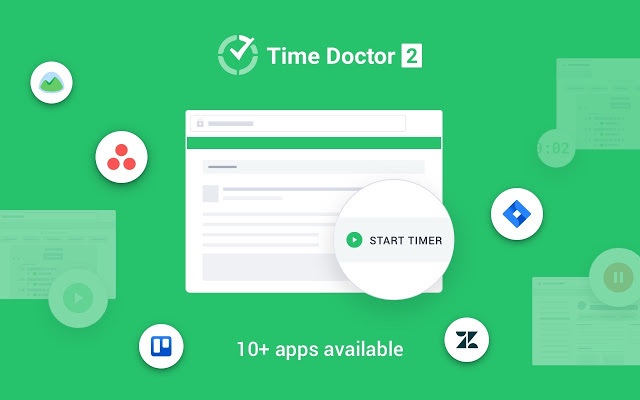Poor workload management can seriously impact your business’s success.
For starters, it can cause frequent employee burnout, which results in reduced productivity, low quality work, and a high turnover rate. It can also cause inefficient resource utilization, affecting your bottom line in the long run.
So how to manage workload of employees efficiently and minimize such issues?
In this article, we’ll share 14 practical tips for effective workload management to help you keep your workforce engaged in a stress-free manner.
This Article Contains:
(click on a link to jump to a specific section)
- 14 proven tips on how to manage workload of employees effectively
- 1. Plan your projects
- 2. Break projects Into manageable tasks
- 3. Set task priorities
- 4. Leverage workload forecasting
- 5. Estimate time and resources
- 6. Determine your team’s capacity
- 7. Set achievable deadlines
- 8. Allocate work evenly
- 9. Use a task management tool
- 10. Be flexible
- 11. Improve team communication and collaboration
- 12. Use time management software
- 13. Educate your team on time management practices
- 14. Take feedback from your employees
Let’s get started.
14 proven tips on how to manage workload of employees effectively
Workload management refers to steps to efficiently distribute and manage work such that employees complete their tasks on time and without taking on undue stress.
It’s an important element in project management and usually involves multiple processes, such as:
- Estimating current and future workload.
- Team capacity planning, i.e., taking stock of your team’s capacity.
- Resource allocation.
- Scheduling and delegating tasks.
- Tracking team workload in real-time.
- Monitoring and managing pipelines to minimize operational bottlenecks.
- Regular check-ins with employees to adjust workflows and deadlines.
A project manager could use a combination of workload management tools to perform these functions.
Read this informative article to learn why workload management is important.
If you frequently face issues like delayed projects and high employee burnout, here are 14 workload management tips that you can implement right away:
1. Plan your projects
It’s vital to take on a project only after you’ve done thorough planning. It’ll lay a solid foundation for workload planning and your team to execute their tasks efficiently.
So where should you start?
You can start by defining the project scope and develop a project charter to help you envision the project in its entirety. These steps will give you the utmost clarity on deliverables, timelines, and priorities.
Equipped with this knowledge, you can then move on to set project goals using appropriate frameworks like SMART, OKR, WOOP, etc.
2. Break projects Into manageable tasks
Executing a large-scale project may seem like a daunting task during the planning stage.
What makes the job easier for the entire team is to split the project into manageable tasks. You can do this based on different factors – deliverables, milestones, priority, etc.
And as you list down each task, try to specify as many details as possible, including estimated time, budget, resources, and interdependencies.
Employers can use a project management tool like Work Breakdown Structure (WBS) to list all project activities before assigning tasks to team members. Employees can then create their own to-do lists based on their assigned tasks.
By following this approach, you can streamline the entire project cycle and keep your team’s workload in check at different stages of the project.
3. Set task priorities
Another key step to help streamline the project pipeline and ensure efficient work distribution is sorting out the task priorities at the very beginning.
How does prioritization help manage employee workload?
Distinguishing an important task from an unimportant one will help your employees use their time and efforts better and move the project in the right direction.
It helps prevent the team from changing course mid-project, something which could pile up the work and put the team under stress.
There are several effective prioritization techniques like the Eisenhower Matrix, Pareto Principle, etc. that managers can use to create project task sequences. These methods could also help employees optimize daily workflows and use their hours more effectively.
4. Leverage workload forecasting
Pre-empting your team’s workload could help you prevent overworking your employees.
This is especially true for businesses that face unpredictable workloads, such as call centers and services businesses.
So what exactly is workload forecasting, and how does it help?
Workload forecasting tools use historical data and AI-based algorithms to predict the amount of workload for a specific time frame.
Having a reasonably accurate estimate of the workload helps you:
- Keep the correct number of people at the job at any given time.
- Assign employees that are well suited for the job.
- Distribute work evenly within the team.
It helps you ensure that you are never over or under-staffed and that your team always stays productive.
Let’s say you run a customer service business. A forecasting tool can help you identify that the amount of workload increases two-fold during a new product launch and that the majority of the queries are related to product specification.
You can double your staff and schedule product specialists on priority to tackle the situation.
5. Estimate time and resources
Managing workload becomes easier when you can tell how much time and resources a specific task may need.
By doing this for every activity associated with a project, you can create a baseline schedule that lists tentative durations for all the tasks and the project as a whole. This project schedule will guide your team throughout the project cycle and help set clear expectations.
Moreover, these estimates will help you set actual deadlines for each task down the line.
6. Determine your team’s capacity
Companies often make the mistake of overestimating their team’s work capacity, which leads to unrealistic expectations, frequent employee burnouts, and project delays.
So before you allocate work, it’s essential to have clarity on how much workload your employees can handle, individually and as a team. This becomes especially important if you have employees assigned to multiple projects.
The most effective way to do that is to track the work hours of your employees using an effective tool. You can then check and compare the time logs to understand the efficiency of each employee.
Project managers also use capacity planning strategies to take stock of their project resources and team capacity. It helps avoid last-minute delays that burden your team unnecessarily.

7. Set achievable deadlines
Setting unrealistic deadlines can hamper the project flow and affect your team’s morale. Remember, a team member working under pressure can be counterproductive and slow down other team members.
So what’s the secret behind setting the appropriate deadline for a task?
Using the combined knowledge of time estimates and your team’s capacity. It’s easier to arrive at a realistic deadline when you know the amount of time a specific task takes and the efficiency of the employee(s) associated with the task.
Moreover, when working with achievable deadlines, your employees won’t need to put in long hours frequently. They’ll remain free from any undue pressure and are more likely to produce high quality.
8. Allocate work evenly
Having a large team may sometimes lead to disproportionate workload distribution, especially in the absence of proper planning.
In extreme cases, some employees may be swamped with work, while others may have to sit out of the project. This unbalanced workload could take a severe toll on your team’s work satisfaction.
Managers should ensure they assign work fairly and evenly, after carefully considering factors like:
- Project requirements.
- Employee’s skill set and experience.
- Employee’s location and availability.
- Client requests, etc.
Project management techniques such as resource leveling could be a great help at this stage.
It’s a resource management and optimization method that answers when a project can be completed with the available resources (employees in this case) without any over or under-allocation.
Check out these excellent resource management software.
9. Use a task management tool
To make work distribution and management easier, you can opt for an effective workload management tool.
There’s no shortage of effective task distribution and task management tools with advanced features today.
These tools can streamline workload planning, task scheduling, assignment, and management. Many of them even have advanced AI-based features to boost work management.
For example, it can help you match tasks with employees’ skills so that you assign the most suitable employee for a job.
Besides, a visual task management system gives your employees a larger perspective and helps them see how their work fits in the bigger scheme of things. This could minimize conflicts and keep them productive.
10. Be flexible
So you’ve done everything by the book up till this stage and find everything sailing smoothly.
However, your projects may still face operational hurdles at times.
Power outages, absenteeism, unexpected influx of work, and many such issues could hamper the project’s flow and increase the workload on employees.
To deal with them, you need to be flexible enough for ad-hoc decision-making to keep your team stress free while ensuring a smooth workflow. This may include re-evaluating and adjusting deadlines, scheduling more staff, prioritizing tasks, etc.
11. Improve team communication and collaboration
Inadequate communication could be a stealthy cause behind missed deadlines and excessive workload issues.
For example, consider a scenario where your client has made an ad-hoc request to change some task priorities. Now without an effective communication system, it may take a few hours for your team to get the new requirements and make the necessary changes to the workflow.
This could result in a critical loss of time and effort and may require the team to spend extra time on a course correction, leading to an overwhelming workload.
Having proper communication protocols in place will keep all stakeholders informed and minimize workload management issues.
12. Use time management software
A great way to empower your employees to stay productive and help them work without any stress would be to use a time management system.
With these tools, employees can register their work hours while managers can monitor their productivity. Recording work hours could help your employees be more aware and focused on the task at hand, helping them achieve their targets within the due dates and keeping workplace stress in check.
Advanced time management software, such as Time Doctor, has many additional features to boost time and work management.
What is Time Doctor?

Time Doctor is an excellent time tracking and productivity management tool trusted by businesses of all sizes to improve the efficiency of their in-office and remote teams.
Here are some key Time Doctor features:
- Offers a simple start/stop timer to help employees log their work hours.
- Has distraction and idle-time alerts to boost employee focus.
- Allows managers to create and assign projects and tasks with ease.
- Enable admins to create work schedules and quickly assign employees to shifts.
- Shows insightful productivity reports to help you track your team’s productivity.
- Lets you pay your team with effective payroll integration.
Check out more ways Time Doctor could improve employee performance.
13. Educate your team on time management practices
Using simple time management techniques could boost your team’s efficiency and reduce work-related pressure.
To boost their team workload management, employers should teach these essential skills to their employees.
Here are some of the widely used methods:
- To-do lists: These lists help note all the tasks you must complete during the workday in one place so that you don’t miss out on any.
- The Pomodoro technique: In this method, you break down your work into short 25-minutes sessions. These short bursts help you focus better.
- Getting things done: This technique focuses on moving everything that has your attention from your mind onto a paper. You can then categorize them and take appropriate actions.
You should also encourage your employees to avoid working on multiple tasks simultaneously.
Why?
While multitasking makes you feel more productive, it could actually increase stress levels and decrease creativity. Instead, you can use a technique called time blocking as an alternative to multitasking. It involves dividing your day into blocks of time, each dedicated to a specific task.
Discover 12 powerful time management tools and techniques to boost your team’s efficiency.
14. Take feedback from your employees
Employees are usually at the center of the operations and can lead you to the root causes of problems that lead to unmanageable workload at your company.
You can schedule a brainstorming session with your team to figure out creative and efficient ways to get things done and reduce the heavy workload on employees.
Acting on these insights will help you understand what your team needs and create a better work environment. It’ll also ensure a healthy work-life balance among your employees.
Key takeaways
Good workload management is vital to ensure good project and employee health.
With a workload imbalance in your team, you’ll constantly face burnouts, wasted productivity (due to over-allocation), poor work quality, high turnover, etc. — all of which impact your profits in the long run.
Use the tips shared in this article to hone your workload management skills and ensure that you meet project deadlines while keeping your workforce stress free.

Andy is a technology & marketing leader who has delivered award-winning and world-first experiences.


